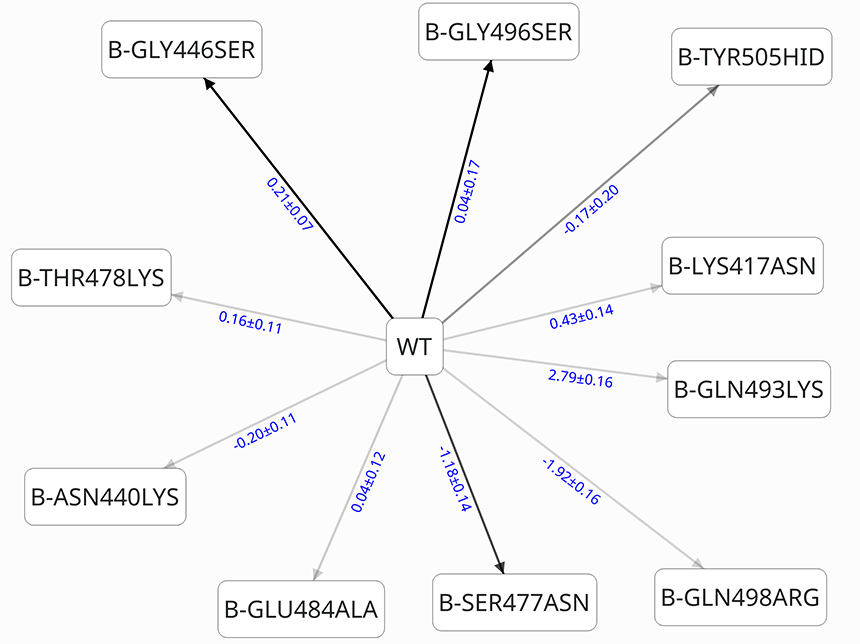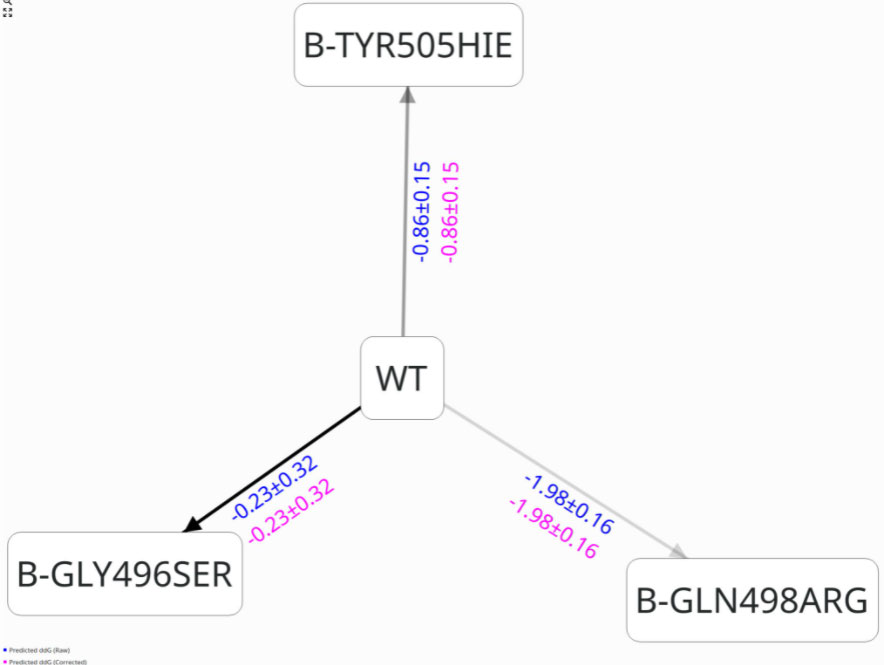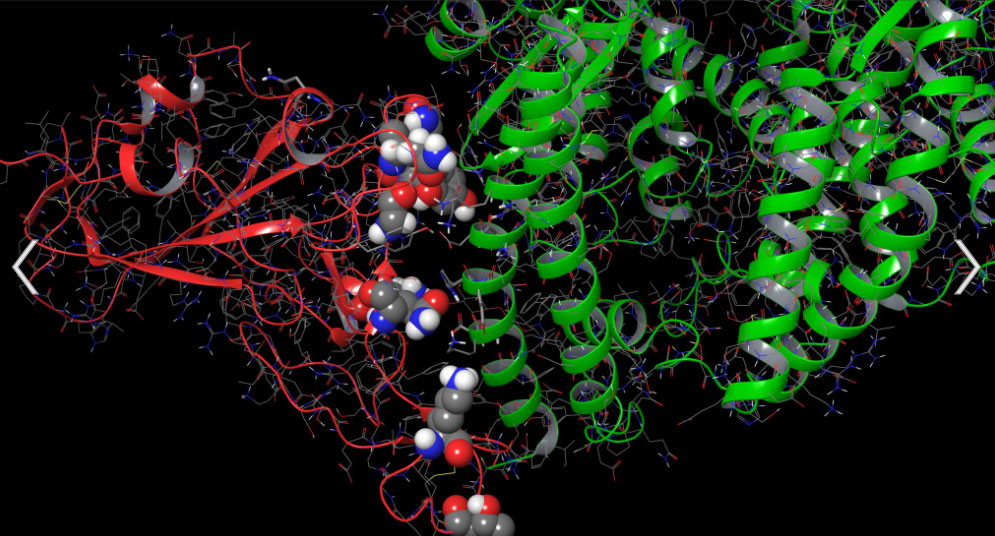Micar21 publish scientific publication in bioRxiv - Omicron - version 1
The High Transmission of SARS-CoV-2 Omicron (B.1.1.529) Variant is Not Only Due to Its hACE2 binding: A Free Energy of Perturbation Study
https://www.biorxiv.org/content/10.1101/2021.12.04.471246v1Abstract
The mutations in the spike protein of SARS-CoV-2 Omicron variant (B.1.1.529 lineage) gave rise to questions, but the data on the mechanism of action at the molecular level is limited. In this study, we present the Free energy of perturbation (FEP) data about the RBD-hACE2 binding of this new variant.
We identified two groups of mutations located close to the most contributing substitutions Q498R and Q493R, which altered significantly the RBD-hACE2 interactions. The Q498R, Y505H and G496S mutations, in addition to N501Y, highly increased the binding to hACE2. They enhanced the binding by 98, 14 and 13 folds, respectively, which transforms the S1-RBD to a picomolar binder. However, in contrast to the case in mice the Q493R/K mutations, in a combination with K417N and T478K, dramatically reduced the S1 RBD binding by over 100 folds. The N440K, G446S and T478K substitutions had lesser contribution. Thus, the total effect of these nine mutations located on the interaction surface of RBD-hACE2 turns out to be similar to that observed in the Alpha variant. In a special circumstances it could be further altered by the E484A and S477N mutations and even lower binding capacity is likely to be detected. Finally, we provide a structural basis of the observed changes in the interactions.
These data may explain only partially the observed in South Africa extremely high Omicron spread and is in support to the hypothesis for multiple mechanisms of actions involved in the transmission.
Introduction
On November 26, 2021, WHO identified the SARS-CoV-2 Omicron variant (B.1.1.529 lineage) as a variant of concern (VOC), based on evidence that it contains numerous mutations that may influence its behavior [1]. However, the mode of transmission and severity of the Omicron variant remains unknown. The B.1.1.529 lineage has a total number of 11 amino acid mutations in its receptor binding domain (RBD): K417N, N440K, G446S, S477N, T478K, E484A, Q493R, G496S, Q498R, N501Y and Y505H [2]. These mutations have been discovered in samples collected in Botswana on November 11, 2021 and South Africa on November 14, 2021. As of 3 December and since 2 December 2021, 30 additional SARS-CoV-2 Omicron VOC cases have been confirmed in the European Union (EU). Countries and territories outside the EU have reported 377 confirmed cases. Globally there were 486 confirmed cases reported by 35 countries. It is uncertain if the Omicron variant is more transmissible or severe than the Delta variant. However, this is the most divergent strain detected so far during the pandemic raising concerns and several countries have already closed their borders due to the possible risk. The mutations in the spike protein of Omicron gave rise to questions, but the data on the mechanism of action at the molecular is level is limited.
In the end of December 2020 we provided urgently high quality data about the effect of the N501Y and K417N mutations, detected in Alpha and Beta variants, to the RBD-hACE2 binding by the Free energy of binding (FEP) approach [3]. The results have been later confirmed by the experimental studies [4-7]. Further, we performed a similar study also for the R346K mutation found in the Mu SARS-CoV-2 variant, which affected monoclonal antibodies (mAbs) from class 2 [8]. In the current study we used the same technique to assay the binding of the Omicron’s S1 RBD to hACE2 and to provide at a molecular level a detail description of the RBD-hACE2 interactions. The FEP method is one of the most successful and precise in silico techniques for protein-protein interactions predictions [9]. It outperforms significantly the traditional molecular dynamics based methodologies, such as for example MM/GBSA and empirical solutions like FoldX. It also often precisely predicts the free energy differences between the mutations [10-12] and has a more than 90% success in the prediction whether one mutation will have either a negative or positive effect on the binding [9].



